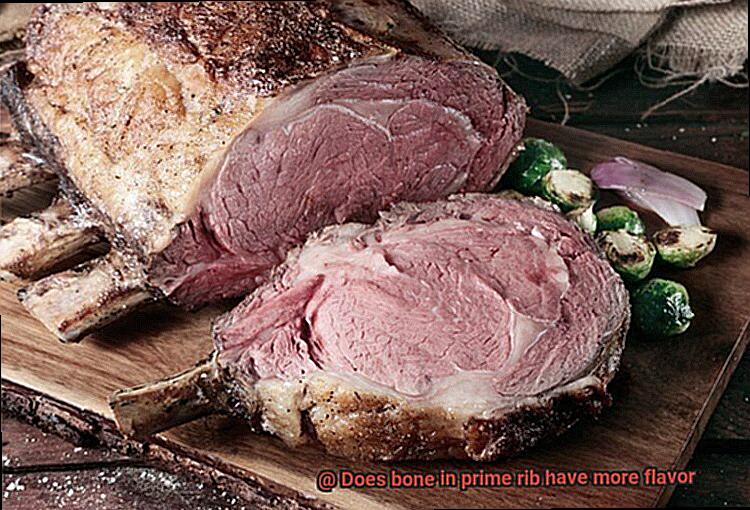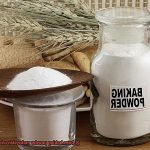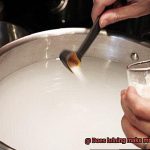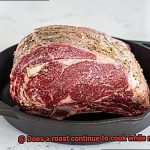Are you a meat lover who’s always on the hunt for the perfect cut of beef? If you’re anything like me, then you know that not all steaks are created equal. And when it comes to prime rib, there’s a hotly debated topic that has been raging on for years: does bone-in prime rib have more flavor than boneless?
As someone who takes their meat seriously, I knew I had to get to the bottom of this mystery. So, in this blog post, we’ll be diving deep into the science behind what makes bone-in and boneless prime rib different in terms of taste and texture. We’ll be examining factors such as fat content, cooking techniques, and even the overall composition of the meat itself.
By the end of this post, you’ll have a better understanding of whether or not bone-in prime rib is truly more flavorful than its boneless counterpart. So if you’re planning on whipping up a delicious prime rib for your next dinner party (or just want to impress your friends with some meat knowledge), then keep reading. Trust me, your taste buds will thank you as we explore the mouth-watering world of prime rib.
Contents
What is Prime Rib?
When it comes to beef, few cuts are as revered as prime rib. This succulent meat comes from the primal rib section of the cow and is widely regarded as one of the most flavorful and tender cuts available. Also known as standing rib roast, prime rib is often served at special occasions or family gatherings, where it’s sure to impress.
The name “prime rib” comes from its origin in the prime section of the rib, but it’s worth noting that not all prime rib is graded as prime. Many restaurants and meat markets serve “choice” or “select” grade prime rib, which is still considered high quality but may lack the depth of flavor found in true prime grade beef.
One of the reasons why prime rib is so mouthwatering is because of its marbling. The small veins of fat dispersed throughout the meat add richness to the taste and help keep it moist and tender during cooking. But what about bone-in versus boneless?
Some swear by bone-in prime rib, claiming that the bone adds an extra layer of flavor to the meat. Bones contain marrow – a fatty substance that can infuse the meat with rich flavor during cooking. However, factors like animal quality, cooking method, and seasoning can all impact how much flavor is extracted from the bone. Ultimately, whether you choose bone-in or boneless comes down to personal preference.
If you opt for bone-in, select a high-quality cut of meat and use a cooking method that allows the marrow to infuse into the meat. This might involve a lower temperature for a longer period or using sous vide. For boneless prime rib, focus on enhancing the natural flavor with seasoning or marinating techniques.
Bone-In vs Boneless Prime Rib
Let’s start with the bone-in prime rib. The bones surrounding the meat are composed of collagen and marrow, which give it a rich, meaty flavor. As the roast cooks, the collagen melts and bastes the meat from within, resulting in a tender and juicy cut of beef with a deep, savory flavor. And let’s not forget that the bones are perfect for making stock or soup after you’ve enjoyed your meal.
On the other hand, boneless prime rib lacks the added flavor boost from the bone. However, this doesn’t mean it can’t be just as delicious. Many chefs prefer boneless prime rib because it allows for more even cooking and better control over the final temperature of the roast. And with no bones to contend with, carving your roast is a breeze.
If you’re all about that deep, meaty flavor and don’t mind a little extra prep work (like carving around bones), then go for bone-in prime rib. But if you want a streamlined cooking process and no fussing with bones, then boneless prime rib might be more your style.
But there’s more to consider than just the bones. Seasoning is key when it comes to prime rib – make sure to use plenty of salt, pepper, garlic, or herbs to really bring out the flavor. And don’t rush the cooking process – low and slow is the way to go for maximum tenderness and juiciness.
Factors Affecting the Flavor of Bone-In Prime Rib
There are several factors that contribute to the taste of this succulent dish. As an expert on this topic, I can tell you that the cut of meat, marbling, aging, and cooking method all play a crucial role in determining its distinctive flavor.
First and foremost, the cut of meat is essential. The best cuts are found in the center of the rib section and consist of the 6th through the 12th rib bones. These cuts have an ideal balance of fat and muscle, which creates that mouth-watering flavor. So, when selecting your bone-in prime rib, choose a cut with the perfect amount of fat and muscle.
Marbling also plays a vital role in enhancing the taste of your prime rib. Those small streaks of fat running throughout the meat not only keep it moist but also contribute to its flavor. It’s crucial to select cuts with a good amount of marbling to achieve maximum flavor.
Aging is another important factor that can affect the flavor of your bone-in prime rib. This process allows enzymes in the meat to break down proteins and tenderize it, resulting in enhanced flavors. Dry aging is preferred by many chefs as it provides a more concentrated flavor. However, wet aging is a faster method that can still produce excellent results.
Finally, the cooking method used for your bone-in prime rib can significantly affect its flavor. Grilling, roasting or smoking are all popular methods that can produce different flavors and textures. You can add even more flavor by using a rub or marinade.
Benefits of Cooking with Bone-In Meat
While boneless cuts may seem like the popular choice, cooking with bone-in meat can elevate your dish to new heights. As an expert in this area, I am here to share with you the numerous benefits of using bone-in meat for your cooking needs.
Firstly, let’s talk about flavor. The bone itself is a flavor enhancer that can take your dish to the next level. As the meat cooks, the marrow inside the bone melts and infuses the meat with a rich and savory taste that is hard to beat. Moreover, because the bone acts as a heat conductor, it helps distribute heat evenly throughout the meat, ensuring that it’s cooked to perfection.
Another advantage of cooking with bone-in meat is that it helps keep your meat moist and juicy. The bone acts as a barrier between the hot pan or grill grates and the meat, preventing juices from evaporating too quickly and drying out. This results in a succulent and flavorful final product that will leave you and your guests wanting more.

In addition to enhancing flavor and texture, using bone-in meat can also be an economical choice. These cuts are typically less expensive than their boneless counterparts, making them an attractive option for those on a budget. Plus, because they’re generally larger in size, they can feed more people and provide leftovers for later meals.
How to Choose the Right Cut of Prime Rib
The key to a successful and delicious roast lies in selecting the right cut of meat. Here are some essential tips that will help you choose the perfect prime rib cut.
Age and Grade of Beef
The age and grade of beef are crucial factors to consider when selecting a prime rib cut. Younger beef typically has more tenderness, while older beef boasts a stronger flavor. However, since most prime rib cuts come from young beef, this may not have a significant impact.
The beef’s grade is also worth considering. USDA Prime is the highest grade of beef, featuring abundant marbling that makes it tender and flavorful. However, it can be quite expensive and challenging to find. USDA Choice is an excellent option, with slightly less marbling but still great flavor.
Bone-In or Boneless
The bone-in versus boneless debate has been ongoing for prime rib enthusiasts. Some argue that the bone adds extra flavor, while others believe it makes no difference.
The bone contains marrow, which is a fatty substance that can add depth and complexity to the meat’s taste. Cooking beef with the bone attached can infuse the meat with its rich flavor. However, the amount of flavor that the bone adds depends on several factors such as the age and quality of beef, cooking method, and seasoning used.
Ultimately, choosing between bone-in or boneless prime rib comes down to personal preference and cooking method. A bone-in cut may be easier to handle and distribute heat evenly if you plan on slow-roasting your prime rib. However, if you prefer a quicker cooking method such as grilling or broiling, a boneless cut may be easier to work with.
High-Quality Cut
Regardless of whether you opt for bone-in or boneless prime rib, it’s crucial to select a high-quality cut from a reputable supplier. Look for marbling throughout the meat, which will keep it moist and tender during cooking. Your butcher can offer valuable insights based on their experience and expertise, so don’t hesitate to ask for advice.
Personal Preference
Ultimately, the right prime rib cut comes down to your personal preference. If you appreciate the visual appeal of a bone-in roast or enjoy the effort of carving around the bone, go for it. If you’re looking for convenience and easy cooking, a boneless cut may be your best bet.
Best Cooking Methods for Bone-In Prime Rib
Bone-in prime rib – the king of beef cuts. It’s no surprise that many home cooks and chefs alike can feel intimidated when it comes to cooking this luxurious piece of meat. But fear not, my fellow foodies. As an expert on the best cooking methods for bone-in prime rib, I am here to guide you through the advantages of each method so that you can create a showstopping dish.
Let’s start with roasting. This classic method involves placing the prime rib in a preheated oven and allowing it to cook slowly until it reaches the desired internal temperature. The result? A succulent and juicy roast with a crispy exterior that’s perfect for those who want a classic taste. Roasting allows you to add your desired herbs and spices to the meat before cooking, enhancing the flavor profile of your dish. Just remember to keep an eye on the internal temperature to avoid over or undercooking.
Next up is grilling. Grilling bone-in prime rib adds a delicious smoky flavor to your dish while keeping the inside juicy and tender. The high heat from the grill sears the meat to create a crispy exterior, locking in those juices as it cooks through. Grilling is perfect for those who love the taste of charred meat and want a quick-cooking option. It’s important to sear the meat on high heat first before lowering the temperature to prevent flare-ups and ensure even cooking.
Last but not least, we have smoking. This method involves slow-cooking the meat over low heat in a smoker, which infuses it with a smoky taste while keeping it moist and tender. Smoking produces a unique flavor that can’t be matched by any other method, making it perfect for those who love the taste of smoked meats. Smoking requires patience as it takes longer than other methods, but trust me when I say that it’s worth it.
Tips for Enhancing Flavor in Boneless Prime Rib
We have compiled some top tips and techniques to enhance the natural taste of your meat and make it a memorable meal.
Seasoning is Key.
Seasoning is the first and most crucial step in enhancing the flavor of your boneless prime rib. Generously apply salt and pepper to bring out the natural flavors of the meat. Adding garlic, onions, or other aromatics can also add depth to its flavor profile. Create a spice blend that includes thyme, garlic powder, onion powder, and black pepper to give every bite an explosion of flavor.
Marinate Before Cooking
Marinating your boneless prime rib for several hours before cooking can help tenderize it and infuse it with flavor. A marinade containing herbs, spices, and acidic ingredients like vinegar or lemon juice can add depth to its taste. Use a combination of oil, vinegar, citrus juice, or even beer as a marinade. The longer the meat marinates, the more flavor it will absorb.
Baste It During Cooking
During cooking, basting your boneless prime rib with a mixture of melted butter, herbs, and spices every 20-30 minutes can add both flavor and moisture, keeping it juicy and tender. This step is crucial to ensure your meat is mouthwateringly delectable.
Rest the Meat After Cooking
Allowing your boneless prime rib to rest for at least 10-15 minutes after cooking will allow its juices to redistribute throughout the meat, ensuring it remains juicy and tender. This often-overlooked step is essential in enhancing its overall flavor.
Pair It with Flavorful Sides and Sauces
Pairing your boneless prime rib with flavorful sides like roasted vegetables or mashed potatoes can enhance its overall taste experience. You can also serve it with a flavorful sauce like horseradish or chimichurri. This can transform it from a simple meal to an unforgettable culinary experience.
Conclusion
After much debate and discussion, it’s safe to say that the question of whether bone-in prime rib has more flavor than boneless is one that meat lovers take seriously. While some swear by the added depth of flavor that comes from cooking with the bone intact, others argue that it makes little difference in terms of taste.
It’s important to note that there are numerous factors at play when it comes to how much flavor is extracted from the bone. The quality of the animal, cooking method, seasoning, and overall composition of the meat can all impact the final result.
If you’re someone who enjoys a rich, meaty flavor profile, then opting for bone-in prime rib may be your best bet. The collagen and marrow found within the bone can add an extra layer of depth to your dish. However, if you prefer more control over your cooking process and want to ensure even temperature throughout your roast, then going with a boneless option may be more suitable for you.
No matter which option you choose, there are ways to enhance its natural flavors. Selecting a high-quality cut with marbling throughout and using proper seasoning techniques can make all the difference in terms of taste. And don’t forget about cooking methods – roasting, grilling or smoking can each bring their own unique flavors to the table.
In summary, whether you prefer bone-in or boneless prime rib ultimately comes down to personal preference.






